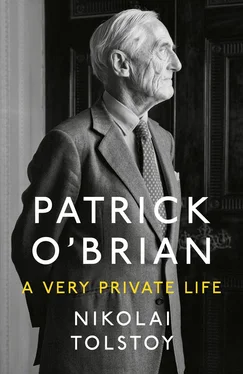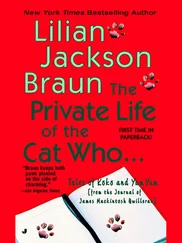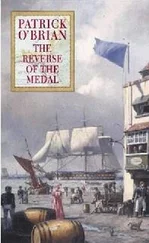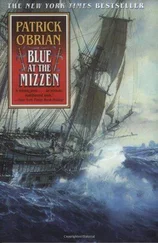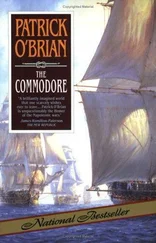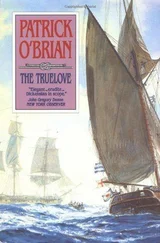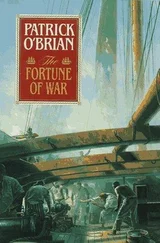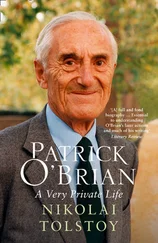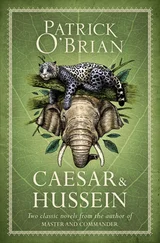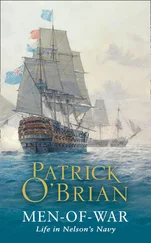Of the thirty-three stories Patrick wrote during the year 1950–51, nine were never published. Of these, three (‘Federico’, ‘Moses Henry’ and ‘Fort Carré’) appear to be lost. The manuscripts of the remaining six are in my possession, and make interesting reading. ‘Mrs Disher’ concerns an old man’s confused reflections on his dying housekeeper, while ‘The Clerk’ explores a disturbing memory of medieval antisemitism encountered in a remote English town by a visiting enthusiast for church architecture.
‘George’ (which he retitled ‘The Tubercular Wonder’) is the most revealing of these unpublished tales in respect of Patrick’s own life. In the first volume of this biography, I suggested that it provides an illuminating exposé of his troubled state of mind at the time he began his secret affair with my mother, betraying an overriding sense of guilt in respect of his betrayed wife Elizabeth. [2] Конец ознакомительного фрагмента. Текст предоставлен ООО «ЛитРес». Прочитайте эту книгу целиком, купив полную легальную версию на ЛитРес. Безопасно оплатить книгу можно банковской картой Visa, MasterCard, Maestro, со счета мобильного телефона, с платежного терминала, в салоне МТС или Связной, через PayPal, WebMoney, Яндекс.Деньги, QIWI Кошелек, бонусными картами или другим удобным Вам способом.
The theme of another story, ‘Beef Tea’, recalls that of ‘Samphire’, with its dull and relentlessly facetious husband, who drives his long-suffering wife to insanity. It looks like a further attempt to dismiss the reproachful figure of my father, representing him as utterly impossible to live with.
The personal application of the story ‘A Minor Operation’, which is one of those published in the collection, speaks for itself. A young English couple come to live in an old French town by the sea. We learn that ‘they were virgins; virgins from principle, mystic and practical’. They are very poor, but so well liked by the inhabitants that they are continually sustained by regular gifts of food. Much of this popularity they put down to the ‘affectionate, well-mannered dog they had brought with them’. After a while Laurence is troubled by a severe affliction to his hand. Eventually an operation becomes necessary, which unexpectedly proves so sanguinary that the surgeons depart, leaving their patient for dead. However, he is not. Arising from the operating table, the victim races frantically back to his apartement , brutally kicks their beloved dog downstairs, and apparently (it is not entirely clear) kills his wife.
Patrick wrote the story on 12 and 13 June 1951, originally entitling it ‘A Nice Allegory’, and later ‘Hernia, Stranguary and Cysts’. That the couple is Patrick and my mother, and the dog their Buddug, is evident from the opening description. Three weeks earlier, my mother had written in her diary: ‘P. showed Dr Delcos swelling on his hand. It has to be removed.’ Five days later ‘P. had his hand done, fainted, poor P., is splinted & bound & in a sling.’ For over a fortnight he continued in great pain, suffering continual discharges of pus from the infected wound, and enjoying little sleep.
It looks as though this protracted suffering led Patrick, as in ‘The Lemon’, to reflect on how far an inordinate degree of psychological distress or physical pain might wholly distort a man’s nature, exposing the perilous fragility of the mind’s control over destructive elements of the subconscious. The threat is emphasized by the frenzied patient’s violent assault on the very beings to whom he is closest.
There exists what may be a tentative draft of the tale in one of Patrick’s notebooks. There he contemplates writing the story of ‘A very sensible childless pair [who] decide that the husband had best beget one on a healthy girl’. This he does, with predictably stressful effect on the wife. This perhaps appearing too trite or unrealistic a theme, it seems Patrick converted it into a savage melodrama, whose principal content derived from his own experience.
Another story written at this time is ‘William Temple’, which remains unpublished. Ultimately a precursor to Patrick’s novel Richard Temple (1962), it begins on an unmistakably autobiographical note. Like Patrick during his wartime service with Political Warfare Executive, Temple is employed by a branch of Intelligence whose members do not normally operate in occupied Europe. Again, I suspect like Patrick himself, ‘he had often pictured to himself William Temple as one of that great secret army that was being built up in France’. Unexpectedly, he is selected to be dropped on a special mission to the French Resistance ‘in the mountains between Spain and France’. After a realistic account of his reception by the maquis, he is diverted into a hunt for a magnificent boar, which he finally tracks down and shoots.
The story is very much longer than others written at this time, being reckoned by Patrick at 23,500 words. The indications are that it was at first intended as a novel, which for some reason came to an unanticipated halt. Possibly, with the (symbolic?) death of the boar, he simply found further inspiration lacking. At any rate, he decided to include it among the collection submitted to Fred Warburg. In view of its exceptional length, it was divided into two parts, oddly entitled ‘A Pair I’ and ‘A Pair II’. The adventure is fluently narrated, but from its length ill-suited to a collection of short stories.
Disheartened by Warburg’s rejection, Patrick brought his short-story writing to an abrupt close. Not until well over a year had passed did he attempt another. As his publisher pointed out, the twenty tales are widely varied in quality. Without straying into excessive analysis, it has to be said that in several cases the plots appear somewhat contrived, and I am inclined to suspect the baneful influence of Somerset Maugham in what appears to be Patrick’s apparent need to round off with a quirky or violent conclusion. Again, several stories are driven by a desire to sublimate personal fantasies, wish-fulfilments or resentments which do not always fully accord to dramatic requirement. More, too, might perhaps have been made of those descriptive passages at which Patrick excelled, evoking the Catalan people and their harsh but beguiling landscape.
Another possibility for generating desperately needed additional income occurred to Patrick at this time. In November 1951 Curtis Brown passed an enquiry to Fred Warburg: ‘Patrick asks if I know of any books which a publisher would like him to translate from the French. It occurs to me that he might be a very good translator. Have you by any chance any such book in mind?’
Warburg could offer nothing, and the proposal fell by the wayside. Eventually Curtis Brown was to be proved right, and Patrick became an admired translator of contemporary French writing. But another ten years were to pass before he was afforded opportunity to undertake that lucratively dependable employment.
Over the winter of 1950–51 the couple’s hopes were largely founded on the success of Three Bear Witness , for which Warburg had expressed such high regard. It was a desperately worrying time. In January 1952 my mother lamented that: ‘The year continues to go badly: Seckers don’t want W[illy Mucha]’s maquettes. Very much gloom.’ They were eager to have the dustjacket illustrated by their friend. At the beginning of the next month ‘Secker sent list with T.B.W. in it.’ A month later the strain had become almost unendurable: ‘I could not sleep for thinking of TBW, copies being liable to arrive any time now.’ Eventually, on 22 April, ‘TBW came; parcel on the stairs. P. infinitely kind, sat by me.’
Читать дальше
